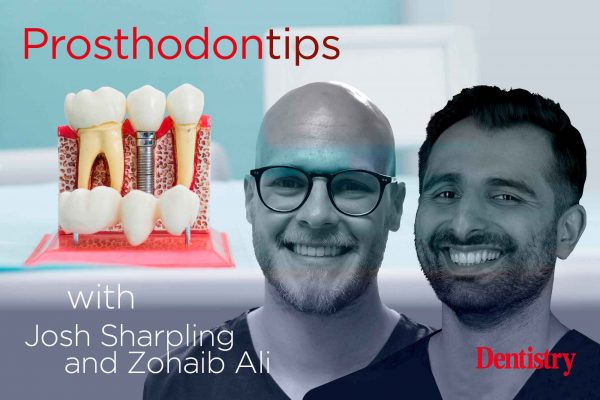In this month’s Prosthodontips, Josh Sharpling and Zo Ali explore the confusing area of occlusion, when problems occur and when to treat them.
Is there any other topic in the dental world that carries such a mysterious quality as occlusion?
There are many occlusal camps, each with their own dogmas. It is a minefield to navigate these ideas.
Confusingly, occlusion is both the most important aspect of a patient’s care, or something that isn’t given a second thought. Both of these can lead to successful treatment outcomes.
What is an ideal occlusion?
- Mutually protected occlusion?
- Canine guidance?
- Balanced occlusion?
- No non-working side interferences?
- ICP (CO) and RCP (CR) coincident?
I see these as occlusal concepts. And although sometimes they can be used in an ideal occlusion, they aren’t what I think.
For me an ideal occlusion is one which is free of symptoms (from the patient), and signs (from the clinician) of occlusal problems.
This encompasses a wide range of the population, many of whom will have none of the characteristics described in the bullet points list above. If a patient has no signs or symptoms, then the occlusion does not require any further consideration.
Common signs and symptoms of occlusal problems
Common symptoms
- Fractured teeth/restorations
- Cracked tooth syndrome
- Crack lines present in teeth
- Ulceration of the alveolar mucosa beneath a denture
- Teeth becoming loose
- Teeth biting into gum
- Inability to eat
- Headaches
- Tender muscles of mastication.
Common signs of occlusal problems
- Fractured teeth/restorations
- Pain on biting
- Bite ‘not feeling right’
- Denture pain
- Denture instability
- Mobile teeth in a patient without periodontal disease patient
- Occlusal trauma to the soft tissue.
If any of the above signs or symptoms are present, then a more in-depth assessment of the occlusion is required.
Occlusal treatments
A number of possible treatments may be needed, ranging from splint provision, to a full mouth rehabilitation. Knowing what treatment is needed, and when, will depend on a full and thorough diagnosis. Also alongside patient desires, and the skill of the treating clinician.
When intervention is required, this is where some of the occlusal concepts discussed earlier are helpful.
There are also some situations where occlusion is important, even if there is no evidence of occlusal problems. These are:
- Full mouth or full arch rehabilitations
- Patients with tooth wear who require treatment
- Restoring implants.
So, what’s the solution to occlusion confusion?
It is accepting that there isn’t a one size fits all approach. An ideal occlusion in one patient may vary wildly from an ideal occlusion in another.
It is far more important to treat each patient as an individual, rather than rely on occlusal dogmas to manage every case.
Please keep the questions coming for the Prosthodontips team. You can contact us on Instagram (@sharplingdental and @prostho_zo) and also email (prosthodontips@googlemail.com).
If there are specific topics you would like us to cover in a column, please let us know.
Previous Prosthodontips:
- Dental ceramics
- Immediate dentures
- Implant salvage
- Unstuck: composites
- Temporary crowns – not so temporary.
Follow Dentistry.co.uk on Instagram to keep up with all the latest dental news and trends.


